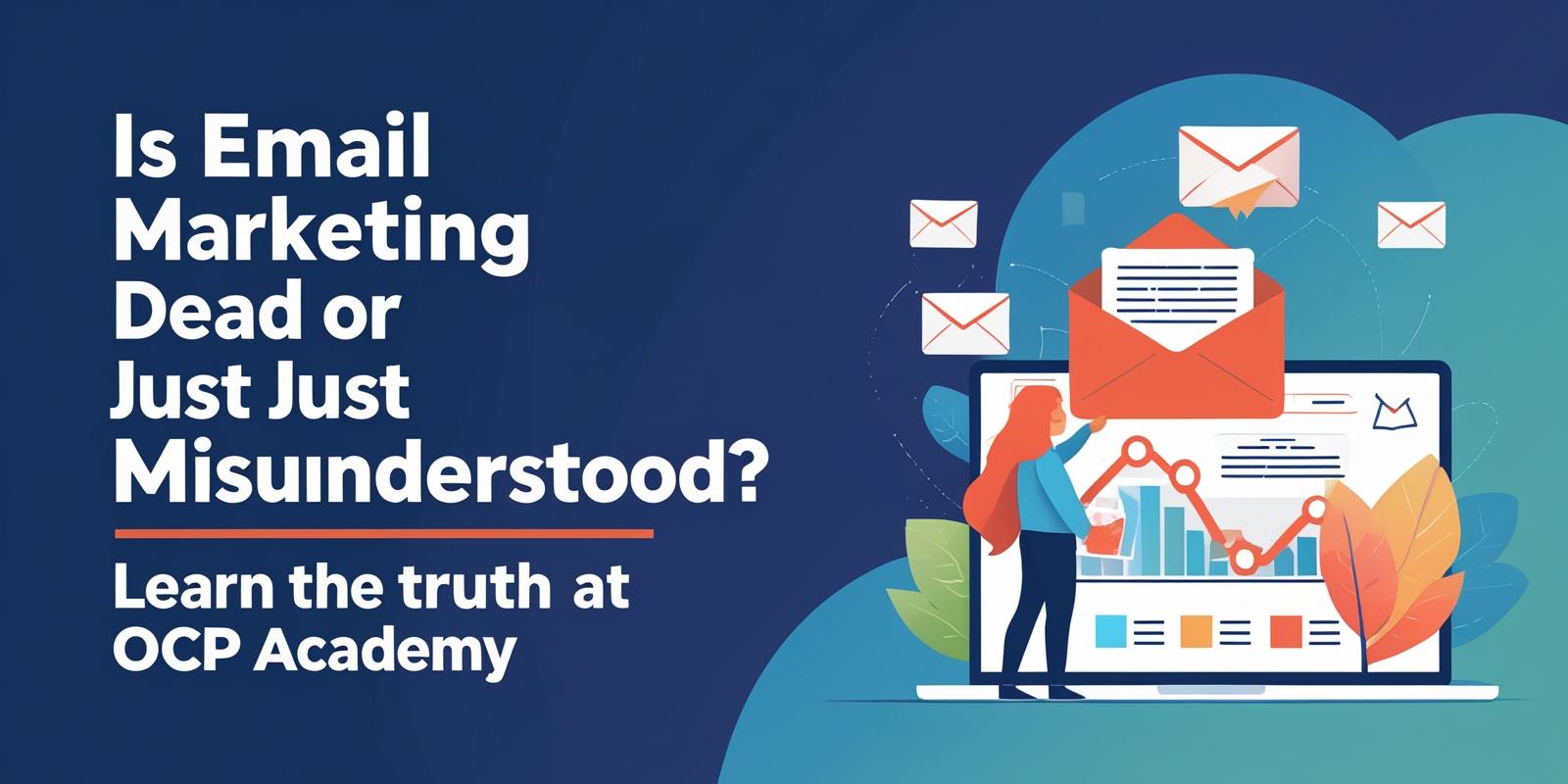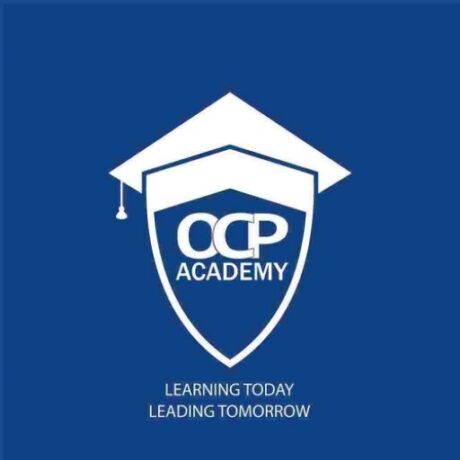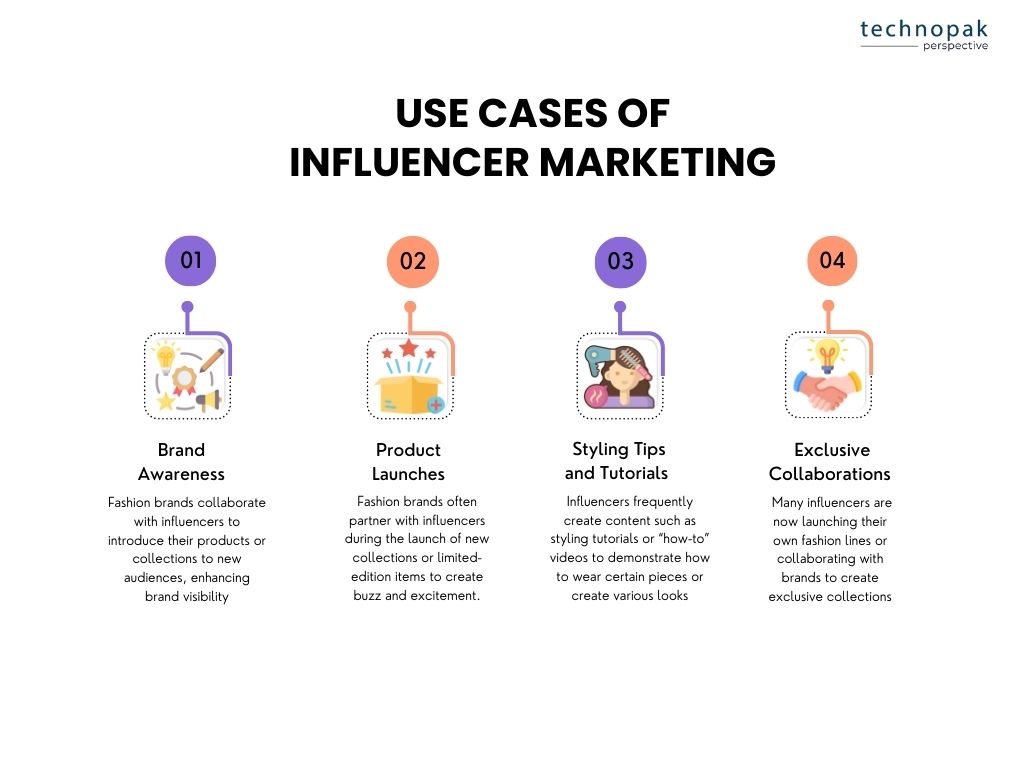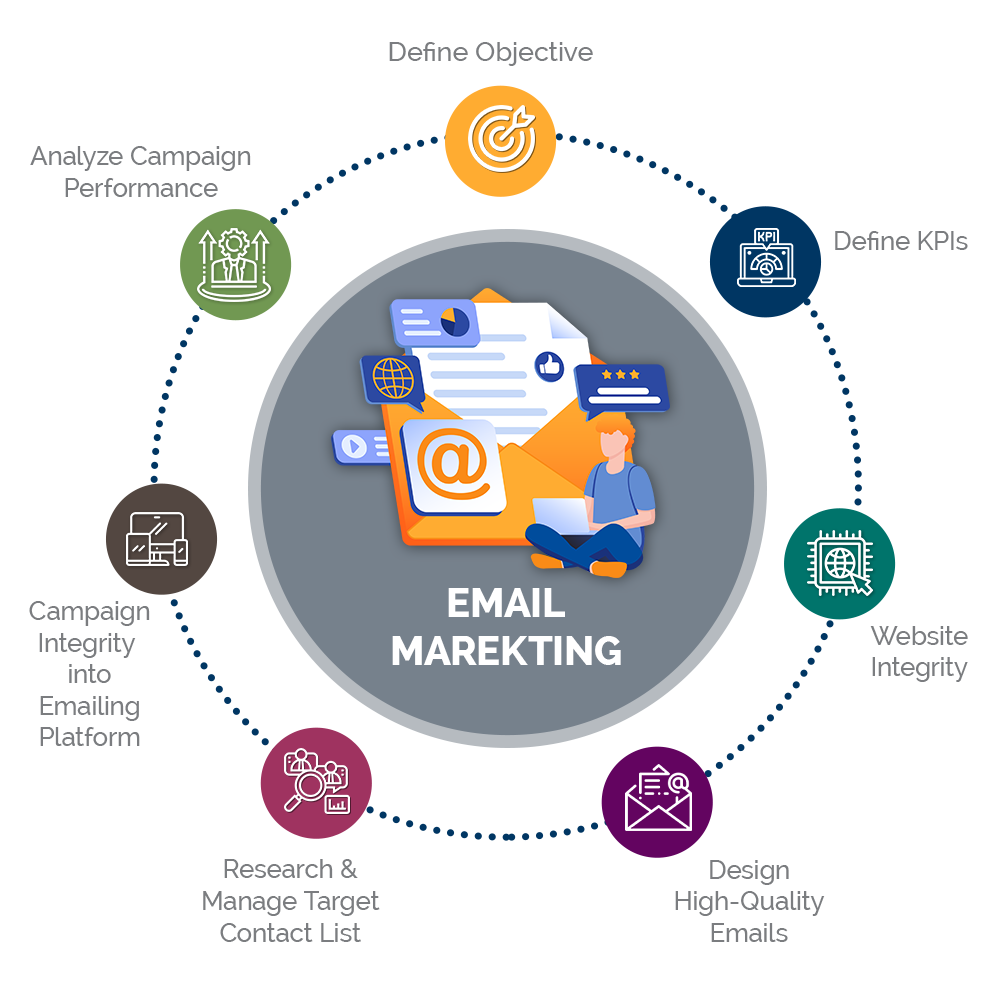
In 2025, Indian businesses find themselves at a crossroads, surrounded by the relentless pace of technological change, shifting consumer expectations, and the daunting pressure to stand out in a digital world that never sleeps. Every day, entrepreneurs, marketers, and small business owners wake up to a new set of challenges—how to reach customers who are bombarded with messages from every direction, how to build trust in an age of skepticism, and how to drive growth when yesterday’s winning strategies suddenly stop working. The Indian market, with its vibrant diversity, rapid urbanization, and explosive internet adoption, is both an opportunity and a puzzle. It’s easy to feel overwhelmed: Should you double down on Facebook ads? Is it time to abandon email for WhatsApp? How do you nurture leads when attention spans are shrinking and competition is fierce? These are not just technical questions—they’re deeply emotional, tied to dreams of growth, security, and making a real impact. In this landscape, many are asking: Is email marketing dead, or have we simply misunderstood its true power? And more importantly, how can institutions like OCP Academy help Indian businesses not just survive, but thrive, by mastering the full spectrum of digital marketing?
Table of Contents
Sr. Headings
1.Introduction: Facing Modern Marketing Challenges in India
2.Is Email Marketing Dead or Just Misunderstood?
3.The Evolution of Email in India’s Digital Landscape
4.Why Performance Marketing Alone Isn’t Enough
5.The Limitations of Google and Facebook Ads
6.Growth Marketing: Building Sustainable Success
7.The Power of Influencer Marketing in India
8.The Synergy: Email, Influencers, and Growth Marketing
9.OCP Academy: Shaping Digital Leaders for 2025
10.How OCP Academy Prepares You for Real-World Business
11.Case Study: Email Marketing Success in Indian E-commerce
12.Data-Driven Marketing: Metrics That Matter
13.Overcoming Indian Market Challenges: Language, Privacy, and More
14.The Results: Full-Stack Digital Marketing in Action
15.Conclusion: Your Digital Marketing Journey Starts Now
16.FAQ: Your Top Digital Marketing Questions Answered
Is Email Marketing Dead or Just Misunderstood?
Rumors of email marketing’s demise have been greatly exaggerated. Yes, inboxes are crowded and spam filters are tougher, but the truth is, email remains one of the most direct, personal, and high-ROI channels available to Indian businesses today1. The narrative that “email is dead” often comes from frustration—campaigns that didn’t work, messages that went unopened, or strategies that felt outdated in a world of instant messaging and viral videos. But what if the problem isn’t with email itself, but with how we use it? In reality, email marketing in India is evolving, not dying. It’s adapting to mobile-first habits, leveraging data for hyper-personalization, and integrating with broader digital strategies to deliver results that social media alone can’t match. The key is to move beyond batch-and-blast tactics and embrace email as a tool for building genuine relationships, nurturing leads, and driving repeat business. When used thoughtfully, email cuts through the noise and lands directly in the hands of your most interested customers—no algorithm required.
The Evolution of Email in India’s Digital Landscape
India’s digital revolution has fundamentally reshaped how brands connect with consumers. With millions of new internet users coming online every month—many for the first time via smartphones—the potential reach of email is staggering. E-commerce growth has made Indians more comfortable with digital transactions, and their inboxes have become trusted spaces for everything from order confirmations to personalized recommendations. Unlike fleeting social media posts, emails are accessible, searchable, and persistent. They reach people on their morning commute, during lunch breaks, and late at night, offering a direct line of communication that feels both personal and professional. But this opportunity comes with challenges: diverse languages, regional preferences, and heightened concerns around data privacy, especially with new regulations like the Digital Personal Data Protection Act, 2023. Success in this environment requires more than just sending emails—it demands segmentation, compliance, and a deep understanding of what makes Indian consumers tick.
Why Performance Marketing Alone Isn’t Enough
It’s tempting to put all your eggs in the performance marketing basket—after all, platforms like Google and Facebook promise instant reach, precise targeting, and measurable conversions. But relying solely on these channels is like building a house on rented land. Performance marketing is powerful for driving short-term results, but it often overlooks the bigger picture: brand building, customer loyalty, and long-term growth. Algorithms change, costs rise, and audiences become fatigued by endless ads. What happens when your ad budget dries up or your account gets suspended? Without a robust owned channel like email, you’re left scrambling. Moreover, performance marketing tends to focus on “bottom of the funnel” conversions, neglecting the crucial work of nurturing leads and deepening relationships over time. In India’s highly competitive market, brands that rely only on paid ads risk becoming invisible the moment they stop spending. True digital success comes from a balanced approach—combining the immediacy of performance marketing with the staying power of channels like email, content, and community.
The Limitations of Google and Facebook Ads
Google and Facebook ads have become essential tools for digital marketers, but they come with significant limitations that Indian businesses must carefully consider in 2025. One of the most pressing challenges is the rising cost of advertising, as the average cost-per-click (CPC) for Google Ads in India can range from ₹20 to over ₹150 depending on the industry, with highly competitive sectors like legal, insurance, and finance seeing even higher rates. This escalation in costs makes it increasingly difficult for small and medium-sized businesses to compete effectively, often squeezing their marketing budgets and reducing overall return on investment. Additionally, both platforms operate on complex bidding systems and are heavily influenced by changing algorithms, meaning that a strategy that works today may suddenly become less effective tomorrow, leaving businesses vulnerable to unpredictable shifts in visibility and reach. There are also stringent policy restrictions and compliance requirements; for example, Google imposes limitations on ad impressions and access to advanced ad formats, only allowing qualified advertisers to bypass certain restrictions, which can create an uneven playing field and limit opportunities for newer or smaller players. In India, Google’s advertising policy for real-money gaming, for instance, excludes most skill-based games except for a few categories like Daily Fantasy Sports and Rummy, leading to accusations of unfair market practices and ongoing investigations by the Competition Commission of India. Furthermore, the platforms’ review processes rely on a mix of AI and human moderation, which can sometimes result in delays, unexpected disapprovals, or even account suspensions, disrupting campaigns at critical moments. On top of all this, businesses must factor in additional expenses such as management fees and taxes—Google Ads in India, for example, incurs an 18% tax on ad spend, further impacting profitability for smaller advertisers. Ultimately, while Google and Facebook ads offer powerful targeting and reach, their reliance on paid visibility, rising costs, policy complexities, and unpredictable performance mean they should be just one part of a broader, more resilient digital marketing strategy.
Growth Marketing: Building Sustainable Success
Growth marketing is the answer to the limitations of pure performance marketing. It’s not about one-off campaigns or chasing the latest trend—it’s about building a system that attracts, engages, and retains customers at every stage of their journey. Growth marketing combines data, creativity, and experimentation to unlock sustainable, compounding results. In the Indian context, this means understanding regional nuances, leveraging local influencers, and using channels like email to nurture leads over time. Growth marketing is holistic; it recognizes that true brand success comes from repeat business, word-of-mouth, and community—not just quick wins. By focusing on the entire customer lifecycle, growth marketers turn strangers into loyal fans, and loyal fans into brand advocates. It’s a marathon, not a sprint, and it’s perfectly suited to the complexity and diversity of the Indian market.
The Power of Influencer Marketing in India
Influencer marketing has exploded in India, driven by the rise of regional content creators and the deep trust they command within their communities. From YouTube stars in Mumbai to Instagram foodies in Chennai, influencers bridge the gap between brands and consumers in ways that traditional ads simply can’t. They bring authenticity, relatability, and a human touch to marketing, making products and services feel accessible and desirable. But influencer marketing isn’t just about flashy endorsements—it’s about collaboration, storytelling, and co-creation. When combined with channels like email, influencer partnerships can drive powerful results: exclusive offers, behind-the-scenes content, and personalized recommendations that feel like advice from a friend. In a country as diverse as India, influencers help brands speak the language—literally and figuratively—of their target audience, building trust and driving action.
The Synergy: Email, Influencers, and Growth Marketing
The real magic happens when email, influencer marketing, and growth strategies work together. Imagine a campaign where a popular influencer introduces your brand to their followers, driving them to a landing page where they sign up for a personalized email series. Over the next few weeks, those subscribers receive valuable content, exclusive offers, and tailored recommendations—each email informed by data and optimized for engagement. This isn’t just marketing; it’s relationship-building at scale. By integrating these channels, brands can move beyond transactional interactions and create meaningful, long-term connections. In India’s crowded digital landscape, this synergy is the key to standing out and driving sustainable growth.
OCP Academy: Shaping Digital Leaders for 2025
In this rapidly changing environment, knowledge is power. OCP Academy stands at the forefront of digital marketing education in India, equipping entrepreneurs, marketers, and business owners with the skills they need to succeed in 2025 and beyond. The Academy’s curriculum is designed for the real world—combining theory with hands-on practice, and covering everything from email marketing and performance ads to influencer partnerships and data analytics. What sets OCP Academy apart is its focus on holistic, full-stack marketing: students don’t just learn how to run ads or write emails; they learn how to build integrated strategies that drive real business outcomes. With expert instructors, industry partnerships, and a deep understanding of the Indian market, OCP Academy empowers its graduates to navigate complexity, adapt to change, and lead with confidence. In a world where digital skills are the new currency, OCP Academy is helping Indians unlock their full potential.
How OCP Academy Prepares You for Real-World Business
OCP Academy prepares you for real-world business by bridging the gap between theoretical knowledge and practical industry application, ensuring that every learner is not just equipped with a certificate but is truly job-ready and confident to tackle the dynamic challenges of today’s digital landscape. The curriculum is meticulously designed by industry experts and covers all critical facets of digital marketing, including SEO, PPC, social media, content marketing, email marketing, and analytics, providing a comprehensive foundation that is directly aligned with what employers and businesses need in 2025. What truly sets OCP Academy apart is its hands-on, project-based approach—learners actively engage with live projects, real-world case studies, and simulations that mirror actual business scenarios, allowing them to apply concepts in meaningful ways and develop a deep, practical understanding of digital strategies. This immersive learning experience is further enriched by direct mentorship from seasoned professionals who offer real-time guidance, share insider tips, and help students navigate the nuances of platforms like Google Ads, Meta Ads Manager, and Google Analytics. Students are not just running theoretical campaigns; they are managing real client accounts, optimizing campaigns, and analyzing data to make strategic decisions, which builds both skill and confidence before they even enter the workforce. The Academy also places a strong emphasis on soft skills, offering resume-building, LinkedIn optimization, and interview preparation to ensure that graduates are not only technically proficient but also ready to present themselves effectively in the job market3. With flexible, accessible online courses, a vibrant support community, and ongoing career support, OCP Academy creates an environment where learners can collaborate, network, and grow together, making it the ideal platform for anyone looking to launch or advance a successful business or marketing career in India’s fast-evolving digital economy.
Case Study: Email Marketing Success in Indian E-commerce
Consider the story of an Indian e-commerce startup selling handcrafted jewelry. Initially, the founders relied heavily on Facebook and Instagram ads to drive traffic, but they struggled with rising costs and inconsistent sales. After enrolling in OCP Academy’s digital marketing program, they learned how to build an email list by offering a free styling guide in exchange for sign-ups. Using segmentation, they sent personalized product recommendations based on browsing history and purchase behavior. They also partnered with a popular fashion influencer, who shared her favorite pieces and encouraged her followers to join the brand’s email community for exclusive discounts. Over six months, the startup saw its email-driven revenue triple, with open rates above 30% and repeat purchases climbing steadily. The combination of influencer credibility, targeted email nurturing, and data-driven optimization transformed their business from a struggling startup to a thriving brand with loyal customers across India. This is the power of full-stack digital marketing in action—turning challenges into opportunities and dreams into reality.
Data-Driven Marketing: Metrics That Matter
Data-driven marketing is the backbone of modern business success because it transforms guesswork into strategic action, allowing Indian marketers to measure, analyze, and optimize every aspect of their campaigns for maximum impact. In 2025, the metrics that matter most go far beyond vanity numbers like simple page views or follower counts—they focus on real business outcomes and customer value. Conversion rate stands out as a crucial indicator, measuring the percentage of users who take desired actions such as making a purchase, signing up for a newsletter, or filling out a form, and helping marketers understand which messages, offers, or user experiences truly drive results. Return on Investment (ROI) is another fundamental metric, revealing how much revenue a campaign generates compared to its cost, and ensuring that every rupee spent is accountable and contributes to the bottom line. Customer Acquisition Cost (CAC) and Customer Lifetime Value (CLV) work hand-in-hand to show not only how much it costs to gain a new customer but also how much revenue that customer is likely to bring over time, guiding smarter budget allocation and sustainable growth strategies. Engagement rate, whether on social media or through email, reflects how actively your audience interacts with your content—likes, shares, comments, and email open or click rates all signal the strength of your relationship with customers and the relevance of your messaging. In the Indian context, where digital audiences are diverse and competition is fierce, tracking these metrics allows businesses to adapt in real time, personalize communication, and continuously improve their marketing efforts. By focusing on data-driven KPIs such as conversion rate, ROI, CAC, CLV, and engagement, Indian marketers can move beyond intuition, make informed decisions, and achieve measurable, lasting results in a rapidly evolving digital landscape.
Overcoming Indian Market Challenges: Language, Privacy, and More
Marketing in India is not for the faint of heart. The country’s diversity—of language, culture, income, and digital literacy—means that one-size-fits-all strategies rarely succeed. OCP Academy helps students master the art of segmentation, crafting campaigns that resonate with specific regions, languages, and customer segments. The Academy also emphasizes compliance with new data privacy laws, teaching best practices for obtaining consent, managing subscriber data, and building trust in an age of skepticism. By addressing these challenges head-on, OCP Academy graduates are prepared to navigate the complexities of the Indian market, turning obstacles into opportunities for growth.
The Results: Full-Stack Digital Marketing in Action
When Indian businesses embrace full-stack digital marketing—combining email, performance ads, influencer partnerships, and data analytics—the results are transformative. Brands see higher engagement, stronger loyalty, and more sustainable growth. They move beyond the rollercoaster of ad-driven sales and build communities of repeat customers who advocate for their products and services. Email becomes the backbone of customer communication, delivering value at every stage of the journey. Influencers amplify reach and credibility, while data ensures that every campaign is optimized for maximum impact. The outcome is not just more sales, but deeper relationships, greater resilience, and a brand that stands the test of time. In 2025, this integrated approach is not just a competitive advantage—it’s a necessity for anyone serious about digital success in India.
FAQs


Absolutely. Email remains one of the most direct and high-ROI channels, especially when combined with personalization, segmentation, and integration with other digital strategies. It’s evolving to meet the needs of mobile-first, digitally savvy Indian consumers, and is essential for building lasting customer relationships
While performance ads can drive quick results, relying solely on them is risky due to rising costs, algorithm changes, and limited brand loyalty. A balanced approach that includes owned channels like email and content marketing ensures long-term growth and resilience4.
Relying solely on performance ads is risky, as audiences are becoming less responsive and competition is fierce. Combining ads with content marketing, influencer partnerships, and personalized customer service delivers better long-term results.
Yes, influencer marketing is highly effective in India. Influencers have loyal followings and can help brands reach new audiences with authentic, relatable content. Partnering with the right influencers can boost credibility and drive meaningful engagement.
Full-stack digital marketing integrates all marketing channels-online and offline-for a seamless customer experience. It helps you reach more customers, improve brand consistency, and adapt quickly to changing trends, ultimately driving better results and higher ROI.
Conclusion
The digital landscape in India is evolving at lightning speed, but one truth remains: success belongs to those who adapt, learn, and embrace the full spectrum of marketing possibilities. Email marketing is not dead—it’s simply misunderstood by those who cling to outdated tactics or ignore its potential for personalization and relationship-building. By combining email with performance ads, influencer partnerships, and a data-driven mindset, Indian businesses can unlock growth that lasts. OCP Academy stands ready to guide you on this journey, offering the skills, knowledge, and support you need to thrive in 2025 and beyond. The future is bright for those who dare to learn, innovate, and connect. Your digital marketing journey starts now—are you ready to take the first step?

OCP Academy
(A Unit of OCP Foundation)
Learning Today, Leading Tomorrow
Recent Posts
- What’s Holding You Back From the Career You Deserve – Could It Be a Lack of OCP Academy’s Expertise?
- Empowering AI Learning: Community and Collaboration at OCP Academy
- Top 7 Reasons to Choose OCP Academy for Your Digital Marketing Certification in 2025
- Bridging AR and Social Media: How OCP Academy Teaches Creating Interactive Digital Campaigns
- Are You One Skill Away from a Promotion – and Is It the One OCP Academy Teaches?
Archives
Categories
- Admission
- Admissions & Enrollment
- AdTech & MarTech EcoSystem
- Aerospace & Defense Technology
- Agency Growth
- AI in Education
- AI in Marketing
- Animation
- AR content creation
- AR filter training
- AR in advertising
- AR Technology
- AR training institute India
- AR, VR, MR, XR
- Artificial Intelligence
- Artificial Intelligence Education
- Asia-Pacific Security
- Audience Engagement
- Augmented reality trends
- B2B Growth
- B2B Marketing
- Brand Building for Engineers
- Brand Digital Presence & Optimization
- Brand Strategy
- Business & Startups
- Business Expansion
- Business Innovation
- Business Intelligence
- Career & Placement
- Career Advice
- Career Change & Upskilling
- Career Developmen
- Career Development
- Career Growth
- Career Guidance
- Career In Digital Marketing
- Career Skills Development
- Career Transformation
- Case Studies
- Certification Programs
- Certifications
- Chandrayaan
- ChatGPT
- Client Acquisition & Retention
- Client Management
- Client Relationship Management
- Collaborative Learning
- Construction Business
- Consumer Awareness
- Content Marketing
- Content Marketing Insights
- Content Strategy
- Corporate Social Responsibility (CSR)
- Cross-Cultural Communication
- Current Affairs
- Customer Engagement
- Customer Experience
- Customer Journey
- Customer Relationship Management (CRM)
- Cyber Threat Intelligence
- Cybersecurity
- Data Analytics
- Data Science
- Data Science in Marketing
- Data-Driven Marketing
- Database Technologies
- Defense
- Digital Career Readiness
- Digital Careers & Opportunities
- Digital Marketing
- Digital Marketing Courses
- Digital Marketing Education
- Digital Marketing Foundation
- Digital Marketing Freelancing Business
- Digital Marketing Skills
- Digital Marketing Strategies
- Digital marmeting
- Digital Skills Development
- Digital Skills Training
- Digital Transformation
- Digital Trust
- Display Marketing
- Doctor
- E-commerce
- E-Commerce & Online Services
- E-Commerce Management
- E-commerce Marketing
- E-Learning
- E-learning Accreditation
- E-Learning Opportunities
- E-learning Platforms
- Eco-Friendly Business Practices
- Editorial & Opinion
- EdTech
- EdTech Industry Insights
- EdTech Reviews
- EdTech Training Programs
- EdTech Trends
- Education
- Education & Learning
- Education Marketing
- Education Sector Insights
- Education Technology
- Education Technology (EdTech)
- Education,
- Educational Institutions
- Effective Email Marketing
- Email Marketing
- Email Marketing Techniques
- Emerging Technologies for Digital Marketing
- Engineering Business
- Engineering Innovations
- Entertainment
- Entertainment Branding
- Entertainment Marketing
- Entrepreneurship
- Entrepreneurship & Digital Growth
- Environment & Climate
- Farming & Agriculture
- Film Industry
- Film Industry Insights
- Film Marketing
- Freelancer Marketing Tips
- Freelancing
- Fundamentals of Social Media
- Future of Business
- Future of Digital Marketing
- Future Trends
- Gambling
- Geopolitics
- Global Marketing
- Green Technology
- Growth Hacking for Apps
- Growth Marketing
- Healthcare Marketing
- Human Rights & Conflict
- iGaming
- Immersive Technologies
- Impact of COVID-19
- Inbound Marketing
- India
- India-Pakistan Relations
- India’s Armed Forces
- Indian
- Indian Defense
- Indigenous Defense Development
- Industry Case Studies
- Industry Insights
- Industry-Relevant Training
- Influencer Marketing
- Information Security News
- Information Technology
- Infrastructure
- Intelligence and Espionage
- Interactive user experience
- International Business
- International Defense Cooperation
- Internship
- IT Industry Insights
- IT Jobs & Careers
- Jammu & Kashmir
- JOB
- Job-Oriented Courses
- Jobs
- Kashmir Conflict
- kasyno online automaty
- Lead Generation
- Lifelong Learning
- local business
- Local Business Growth
- local SEO
- Local SEO for Schools
- Local SEO Strategies
- Manufacturing
- Marketing Automation
- Marketing Certifications
- Marketing Courses in India
- Marketing Education
- Marketing for Institutions
- Marketing Leadership Programs
- Marketing Metrics & KPIs
- Marketing Strategies
- Marketing Strategy
- Marketing Technology
- Marketing Technology (MarTech)
- Marketing Tools
- Marketing Trends
- Marketing Trends 2025
- Media & Broadcasting
- Media & Entertainment
- Mentorship
- Mentorship in Tech
- Mentorship Programs
- Meta Spark AR learning
- Military Operations
- Military Strategy
- Military Technology
- Missile Technology
- Mobile App Marketing
- Mobile Apps & Innovation
- Mobile Commerce
- Mobile Tools
- Movie Promotions
- National News
- National Security
- new
- News Industry Trends
- OCP Academy
- OCP Academy courses
- OCP Academy Insights
- Off-Site SEO
- On-Site SEO
- Online Advertising
- Online Branding
- Online Courses
- Online Digital Marketing Certificate Programs
- Online Journalism
- Online Learning
- Online Learning Platforms
- Online Learning Programs
- online marketing
- Online Reputation Management
- Online Safety & Scams
- Parent Engagement
- Parenting & Technology
- Performance Marketing
- Personal Development
- Politics & Policy
- Post Graduate Digital Marketing Course
- PPC Ads
- Professional Certification
- Professional Development
- Professional Growth
- Professional Training & Certification
- Professional Training Programs
- Ratan Tata
- Real-time user engagement
- Real-World Applications
- Realstate
- Reel
- Remote Client Management
- Sales
- School Growth Strategies
- Search Engine Marketing
- Search Engine Optimization
- SEO
- SEO & Search Marketing
- SEO & Search Strategy
- SEO for Engineers
- shopkeeper
- Shorts
- Skill Development
- Skill Enhancement
- Skill-Based Learning
- Skills Development
- Small Business
- Small business growth
- Small Business Tips
- Snapchat Lens Studio tutorials
- Social Media
- Social Media Engagement
- Social media innovation
- Social Media Marketing
- Social Media Strategy
- South Asia
- South Asian Security
- Space Science
- Startup Hub
- Startup India
- Startup Marketing
- Stock Market
- Student Resources
- Student Success Stories
- Sustainability
- Tech-Driven Careers
- Technology
- Technology in Media
- Technology Trends
- Terrorism & Security
- The Path to Digital Journey
- Tourism & Economy
- Trending Technologies 2025
- Uncategorized
- Urban Mobility
- User Experience (UX)
- Video Marketing
- Visual storytelling with AR
- Web Analytics & Metrics
- Web Design
- Workshop Highlights & Webinars
- XR in marketing
- YouTube







